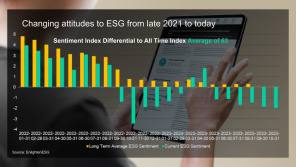
In the summer of 2020, we made the switch to an electric car.
For the past year, I have enjoyed not needing to stop at petrol stations; instead charging at night with electricity from a green supplier – so the energy we take out of the grid is replenished with energy from wind, solar and hydroelectric sources.
Over the past few weeks, watching as queues for petrol and diesel snake around the block, that decision has felt like a godsend.
According to the Financial Times, some 28m electric vehicles are expected to be sold globally in 2030. Last year, there were just 2m.
The Guardian reported that electric vehicle sales in September alone were close to the figures for the whole of 2019, with Auto Trader highlighting a surge in interest after September 24, when panic buying of petrol began.
Meanwhile, I have become the go-to source for friends and colleagues who have been mulling the switch for some time and have now been spurred into action.
Our real range is about 220 miles of motorway driving is the answer and yes, ‘range anxiety’ quickly fades as an issue unless you're on a longer journey, if you’re interested.
But here’s the quandary: while the carbon footprint to operate an electric vehicle using renewable energy is far lower than that of a traditional vehicle, the manufacturing footprint is up to 60 per cent higher, mostly due to the battery. With demand surging, the CO2 impact of production will grow significantly.
In addition, while the experience of driving an electric vehicle is fantastic for local journeys, try finding an available and working charger on the M4 on a bank holiday Monday. The charging network is already lagging way behind demand, let alone with tens of thousands of additional vehicles being registered every month.
These two challenges – balancing long and short-term impacts, and the expectations vs the reality of ownership – are also relevant when advisers are talking to clients about sustainability in their portfolios.
We know from psychometric profiling at Dynamic Planner that sustainability is ‘somewhat’ to ‘very’ important to more than 70 per cent of clients, but reflecting that in investment recommendations is not straightforward, and conversations about the trade-offs are important.
Yes, a carbon neutral portfolio today might sound appealing, but to get to net zero we need to build, manufacture and transport a lot of infrastructure, goods and equipment – and therefore to spend a lot of carbon in the process.
Building an investment strategy around renewable energy or green tech investments could also seem attractive, but these are emerging, rapidly evolving industries and stock prices can be volatile. Excluding significant proportions of the available investment universe reduces diversification and potentially increases risk.
It sounds as though I am arguing for the status quo, but far from it. We all recognise the need to address climate change and its impacts, but translating this into suitable portfolio design is not straightforward.
Placing clients, with the best of intentions, into portfolios that don’t reflect their long-term objectives or are too high risk serves no one in the long term.
Role of advice
As with all good financial planning, the starting point has to be to understand the client’s situation, their future objectives and their risk profile. Their preferences for sustainable investing and its importance versus the desire for return regardless of ESG consequence can then be layered in on top of these foundations.
Once investor preferences are understood, the adviser then needs to bring the same scrutiny to bear on the investment solutions available.
This is not an easy task. As an industry, we are still in the foothills of understanding the impact of sustainability factors on investments. The nomenclature is developing, but is not yet there and the same can be said for disclosures.
That said, the fact that measurement is now taking place is having an impact on the sustainability of commonly available funds as managers respond to increasing levels of scrutiny.
When we look at the multi-asset funds available within the most common Dynamic Planner risk levels, for example using the MSCI screen, more than 90 per cent of them are A or above.
Managers are responding to demand by managing their exposures to laggards who can’t or won’t commit to plans to transition their businesses. This is good news for the ability to achieve diversification and good returns for the risk taken for the majority of clients.
What’s the solution? For me, it’s not to let the best be the enemy of the good. When we bought an electric car, we knew the infrastructure wasn’t there yet.
But we also knew that we would be contributing to the move away from fossil fuels and that improvements in the charging network would require the push from drivers, as well as the pull from regulatory change.
The headlines and policy decisions that result from the forthcoming UN Climate Change Conference (COP26) in Glasgow are likely to cause yet more households to examine the sustainability of their choices – both of the cars they drive and of their investments. With that, the infrastructure and further global regulation to improve transparency and comparability of sustainability reporting will come.
In the meantime, we do the best with what we have and strive towards continuously improving our understanding, data and systems so we can play our part as an industry in the fight against climate change.
Ben Goss is chief executive of Dynamic Planner




